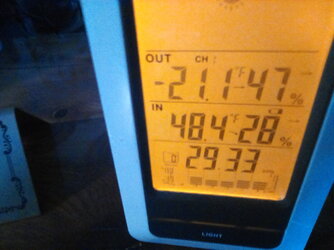I’m interested in hearing from others who are using wood as a sole heat source- that means no backup propane, no backup electric- no backup, period.
1. What is the building spec?
2. What are the stove(s) you are using?
3. Do you have plumbing and what do you do to manage temp stability?
4. What is a typical overnight burn experience in zero or subzero temps?
5. How much wood do you use in a day or a year?
6. What is the daily temperature variance you experience in the building during zero/subzero temps?
7. Do you measure the moisture content of your wood?
I’ll post my own responses in a bit, as we are doing this both at home and workspaces. This post is inspired by a challenging off grid workshop situation described here, and the urge to design the perfect off-grid situation:
 www.hearth.com
www.hearth.com
1. What is the building spec?
2. What are the stove(s) you are using?
3. Do you have plumbing and what do you do to manage temp stability?
4. What is a typical overnight burn experience in zero or subzero temps?
5. How much wood do you use in a day or a year?
6. What is the daily temperature variance you experience in the building during zero/subzero temps?
7. Do you measure the moisture content of your wood?
I’ll post my own responses in a bit, as we are doing this both at home and workspaces. This post is inspired by a challenging off grid workshop situation described here, and the urge to design the perfect off-grid situation:
New Lopi Answer- Questions
This June 2021 manufacture Lopi Answer is the only heat source in this 350' off grid workshop. I'm having problems getting the fire burning on a daily basis and if the space was unused prior day, (and thus cold) it can take 6 hours to get the space up to a reasonable low 60s working temp. We...
 www.hearth.com
www.hearth.com


